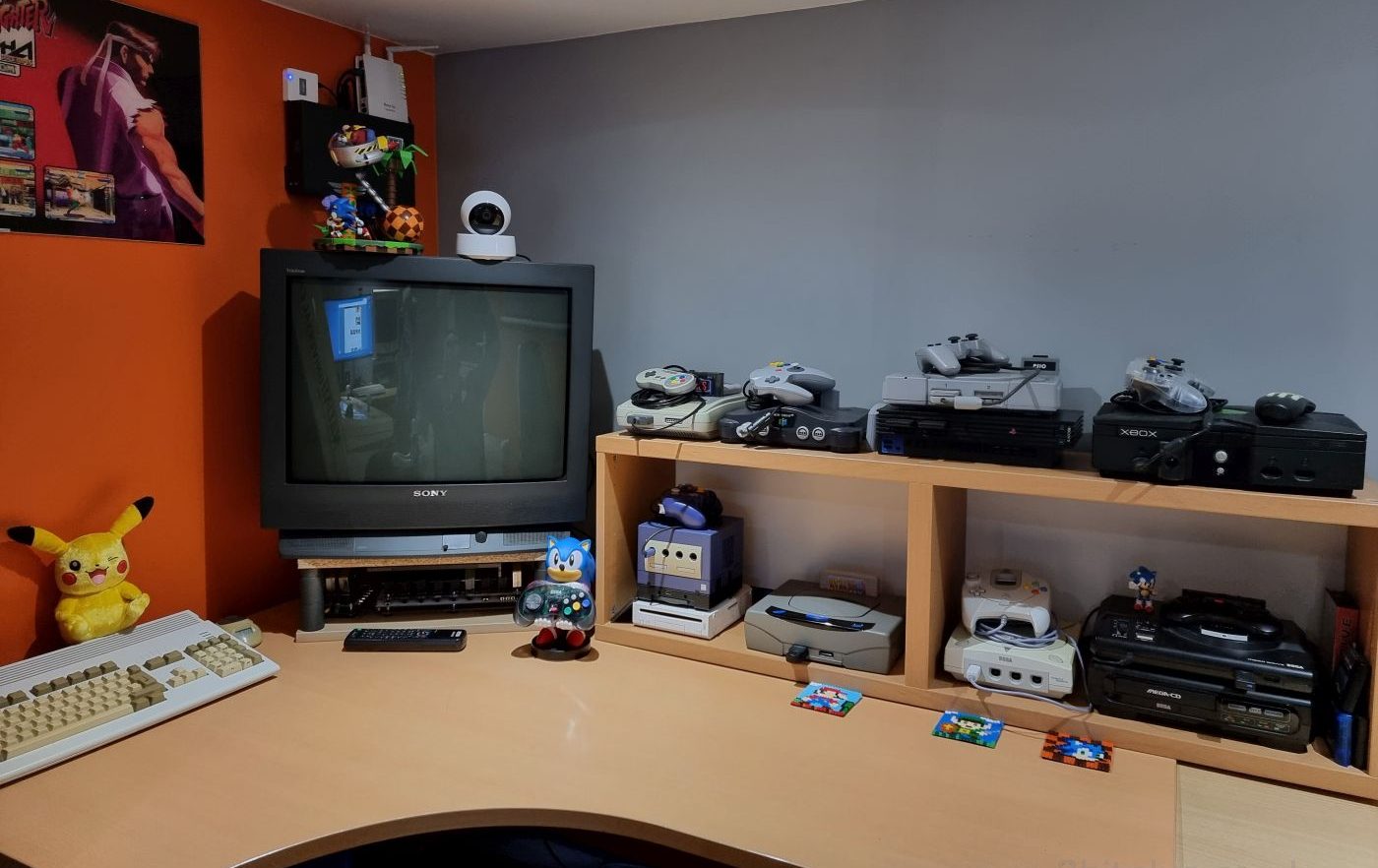
Overview of each console currently on my retro gaming desk. Mods installed and configurations.
I’ve had a few emails asking to show off my retro gaming desk section of my workshop in more detail. What consoles I have out, and also what modifications they may have installed in each console.
Now the weather is getting warmer here in the UK, its nice to stay out late and play some video games. I have very few consoles setup in the main house. Presently just the PS4 and Switch so all the rest are in the workshop. Also with my love for playing these type of games on a CRT, dedicated space is needed and its not really practical in the modern living room.
One thing you will notice is the lack of original games along with the consoles. I have a huge collection of classic games, but these are stored elsewhere.
TV Display
Lets start by taking a look at the TV. Its usually the first thing people notice on this desk. Good CRT TV’s are getting harder to find nowadays here in the UK, so having a couple of extra displays in storage is always a good idea. I have 3 Sony Trinitrons in total, but this is the unit I decided to keep out for daily use.
25″ Sony Trinitron KV-25F1U. Dating to around the mid 90’s, this TV is a good all round display with all the Trinitron hallmarks you would expect from Sony. Good brightness and also that nice “aperture grill” shape to the phosphor groups. It also has very good sound output as most Sony CRT TV’s did, and RGB scart input as standard.
This TV needed a lot of calibration in the service menu to flatten the image at the sides to my liking. I also suspect its been rather heavily used over the years, but testament to Sony’s 90’s engineering, its still got plenty of life and enjoyment left to give. It also has the most H-shift I’ve ever encounter on a customer CRT with RGB signals. RGB image was shifted over to the left with no way of correcting in the service menu. Subsequently I resolved this by investing in a separate signal shifter device that sits inline with the RGB input.
This TV excels at 240p content and all the consoles that output this look amazing. Unfortunately 480i can produce a slight flickering, but its only noticeable when sitting very close to the TV and not a problem for me.
RGB Connections
Here in the UK, we were very lucky that most TV sets sported RGB connections during the 90’s. All my consoles are connected to the TV via RGB Scart. In some cases the consoles needed modifications to output RGB, such as the N64. Unlike modern TV’s that usually feature two, three or more HDMI sockets, CRT TV’s usually only had one full RGB Scart socket. The other scart socket on this TV is just for composite signal input.
With all these consoles at hand I didn’t want to be plugging and unplugging Scart cables all the time. Devices like the Hydra are perfect for connecting multiple consoles to your display and even automatically switch betweem then when powering on and off. I highly recommend the Hydra. All my scart plugs are labelled and ready to go. The other device under the TV is the analogue H/V shifter. Very useful for adjusting the centre point of the image.
Consoles
Now lets move on to the game consoles.
Super Nintendo SNES
My PAL SNES was once modified with 50/60hz and region nod switches on the side, but these have been removed and a switchless mod installed by myself. I’ve also installed a SuperCIC mod to allow all games and the everdrive to work seamlessly.
For SNES games I have a SD2SNES cartridge. This flash card allows almost the entire SNES game library to be played, in addition to games that need additional chips like Star Fox and Doom. 32Gb SD card is more than enough to contain the entire SNES library .
Nintendo 64
This is a US NTSC region N64 that I have previously installed an RGB amplifier. No other internal mods, but it does have the official Nintendo 4Mb memory expansion.
Accompanying the N64 is the trusty Everdrive64. This is the original version from Krikzz purchased around 2011 and still working perfectly. Game roms are stored on a 8Gb SD card.
Sony PlayStation
Model SCPH-5501 PAL PlayStation including the all important parallel expansion port. The only modification made to this console is the installation of the PSIO switch board required to make the PSIO expansion work correctly. In short it redirects some CD functions to the expansion port required by the PSIO.
Games ISO’s are loaded via the PSIO from a 64Gb SD card. Presently I have around 60 games loaded to the SD-Card. Some games need converting to work correctly with the PSIO so this requires time to setup more.
Sony PlayStation 2
My PS2 has no complicated internal mods, however it does have a Mc Freeboot memory card. Around the back I have an official Sony HDD/LAN expansion module that I upgraded from IDE to SATA connection. In the expansion bay I have a 1TB 3.5″ SATA hard drive.
Games are loaded via OPL (open PlayStation loader) installed on the memory card in McFreeboot. Artwork and covers are also uploaded for about 150 games. Loading from the hard drive is considerably faster than the DVD drive. Gran Tourism 4 is almost instant when loading into a race.
Microsoft Xbox
This is a PAL region Xbox version 1.4 that I recently modded for my gaming setup. Its equipped with a Open Xenium modchip flashed with IND BIOS 5004.67. The original 10Gb hard drive has been replaced with a 1TB SATA unit with a StarTech adapter and also a suitable 80wire IDE cable. I also upgraded the RAM from 64Mb to 128Mb.
When powering this console on, it loads to XBMC4Xbox dashboard. The games are selectable in the “games” section and so far I have about 50 games installed, but I’m planning on adding many more. Loading games from the hard drive is much faster than the original DVD drive.
Nintendo GameCube
A PAL GameCube with the rather rare QOOB Pro modchip installed. Games are stored on a 64Gb SD card connected to console with a sd2sp2 adapter located in the serial port located in the underside expansion slot.
The games are loaded by powering the console on and loading Swiss directly from the modchips internal storage. Unlike older methods of loading GameCube games from SD card, the sd2sp2 is fast and plays animations smoothly.
Nintendo Wii
This PAL Wii is soft-modded to allow for the installation of the HomeBrew channel. From here games can be loaded via USB Loader GX application. Storage is a 240Gb SSD connected with a USB2 SATA adapter
Loading times seem faster than the original disc’s. USB loader GX is very customizable and look very much like the original Wii dashboard.
Sega Saturn
My Sega Saturn is an original edition japanese hst-3200. Its been extensively modified with a replacement 12v power supply, universal region BIOS, FRAM save memory mod, switchless 50/60hz selector and also a large capacity battery pack. Finally I installed a Fenrir ODE and 400Gb SD card containing a large representation of the game library.
IT also has the action reply memory expansion for the games that require it, and a wireless controller.
Sega Dreamcast
This console started out as a stock PAL console. Its now got a replacement 12v power supply and the BIOS has also been changes to the NTSC red logo. NTSC video is enabled by default. The original GD-Rom was replaced with a USB-GDrom device, and an internal 1TB hard drive contains the complete Dreamcast game library.
Games load slightly faster and with much less noise than the original GD-Roms.
Sega Megadrive
Sega Megadrive. This console is actually a very early VA3 board with the rear serial pot and no TMS screens. These board have better audio output than the later revisions. It features a switchless 50/60Hz selector and multi coloured LED. The Mega CD underneath is actually just an empty shell. All games including MegaCD are played from the Mega EverDrive Pro cartridge. The 32Gb SD card is enough storage for the complete game library including Master System.
Additionally I also have a 32X for this setup, but currently it isn’t connected as it prevents the Everdrive loading Mega CD and Master System games.
Amiga 1200
Yes I know this is a computer and not a console, but here in the UK having an Amiga in the 90’s (usually an A500) as a game console was very acceptable. It had a huge library of games and benefited from the keyboard and mouse in ways ‘console’ games didn’t. Amiga was always part of the gaming landscape for me and my friends.
My Amiga 1200 rev 2.B has been upgraded with a Magnum 1230 card featuring a 68030 processor running at 33Mhz with 68882 FPU, and 128mb of memory. For storage it has an 8Gb Compact flash card loaded with the complete Amiga game library accessible with WHDLoad on Workbench 3.1.
Under the desk
Under the desk I have storage draws for extra controllers, power and video cables. All the power cables are connected to high quality power strips and individually switched off when not in use.
Future
For now I have all the consoles accessible that I’m likely to want to play. I may change things in the future, but for now I’m very happy with how everything’s setup. Perhaps I might add some LED lights to the shelves but other than that I think its pretty much perfect.
Neil – 8bitplus – 2022
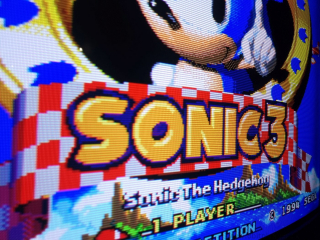
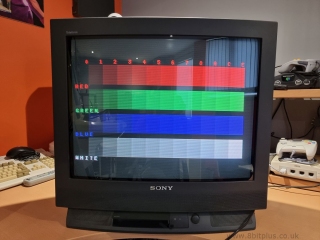
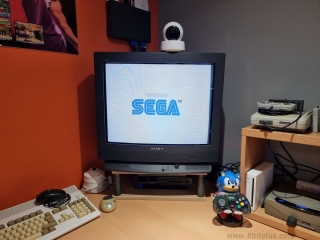
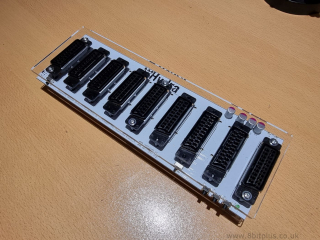
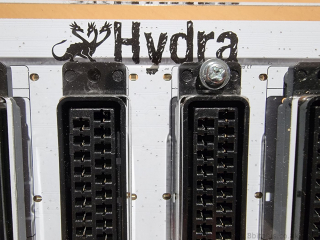
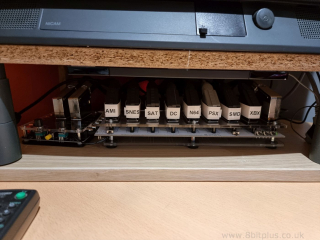

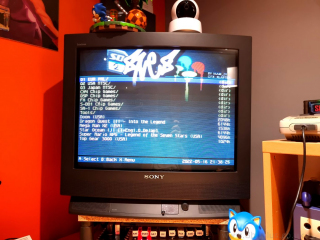
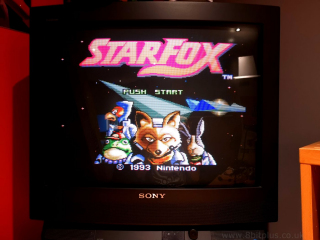
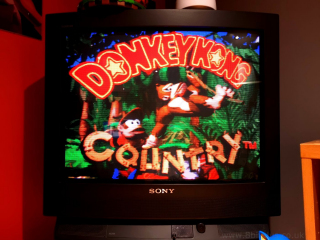
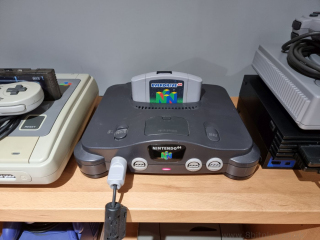
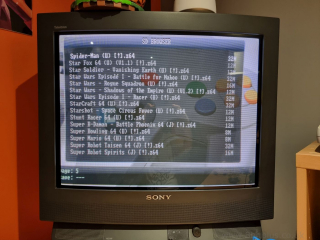
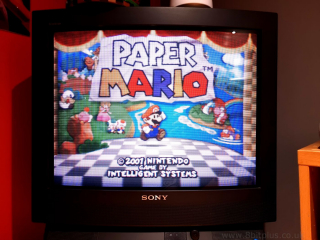
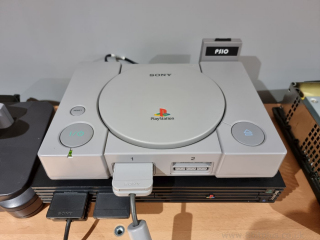

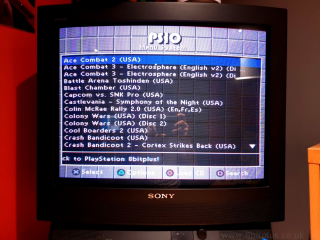
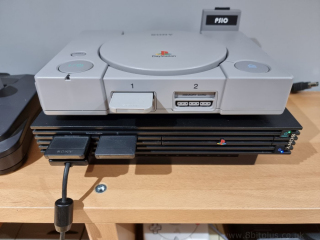
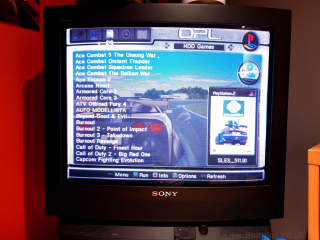

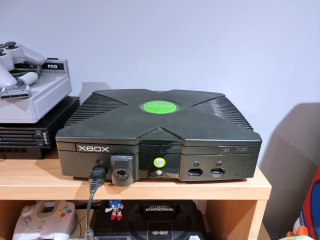
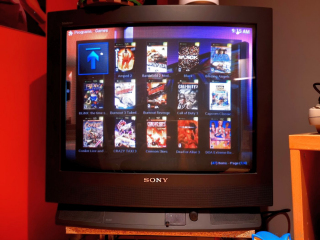

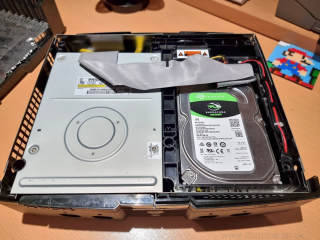

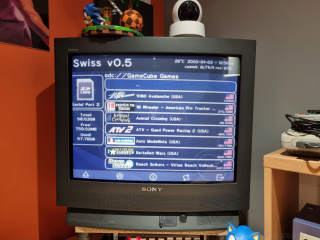
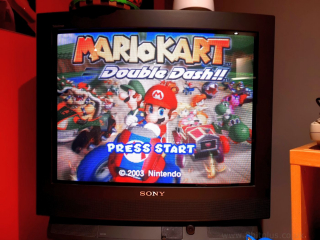


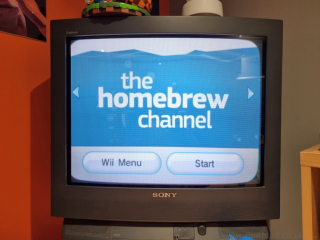
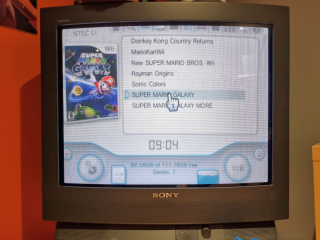
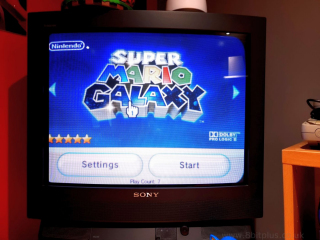
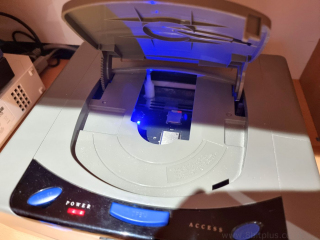
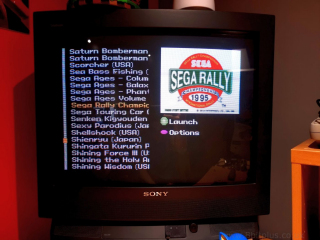



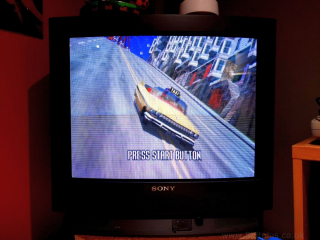


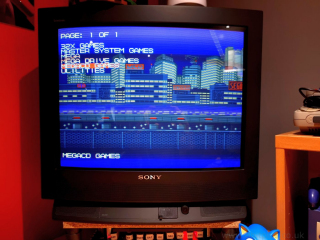
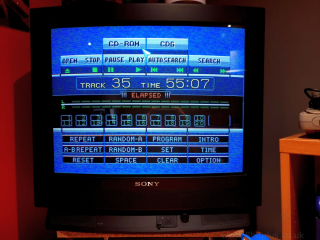


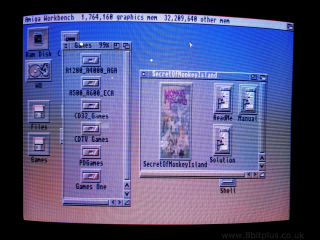
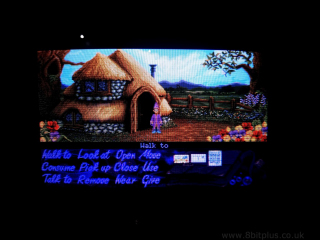
Incredible collection and incredible work you’ve done to the machines! I especially like the Amiga 1200.
As a young kid we couldn’t afford a SNES or Mega-Drive, so my uncle gave us an Amiga 500 as a hand-me-down with some gammy old joysticks and a ton of floppy’s that weren’t always labeled or working.
I was jealous of anyone with a 1200 because they could play Street Fighter II Super Turbo, which I saw in the local shop. Now I have a Sega New Astro City with two LS-40s. and every street fighter I could want haha! Justice!
Love the site/blog, can’t wait to see what projects you get up to in future.
Very cool setup! I have a similar amount of systems connected up, though without any mods other than a SNES Everdrive and a soft-modded Wii.
Seeing all you’ve done is very motivating. Keep up the great work.